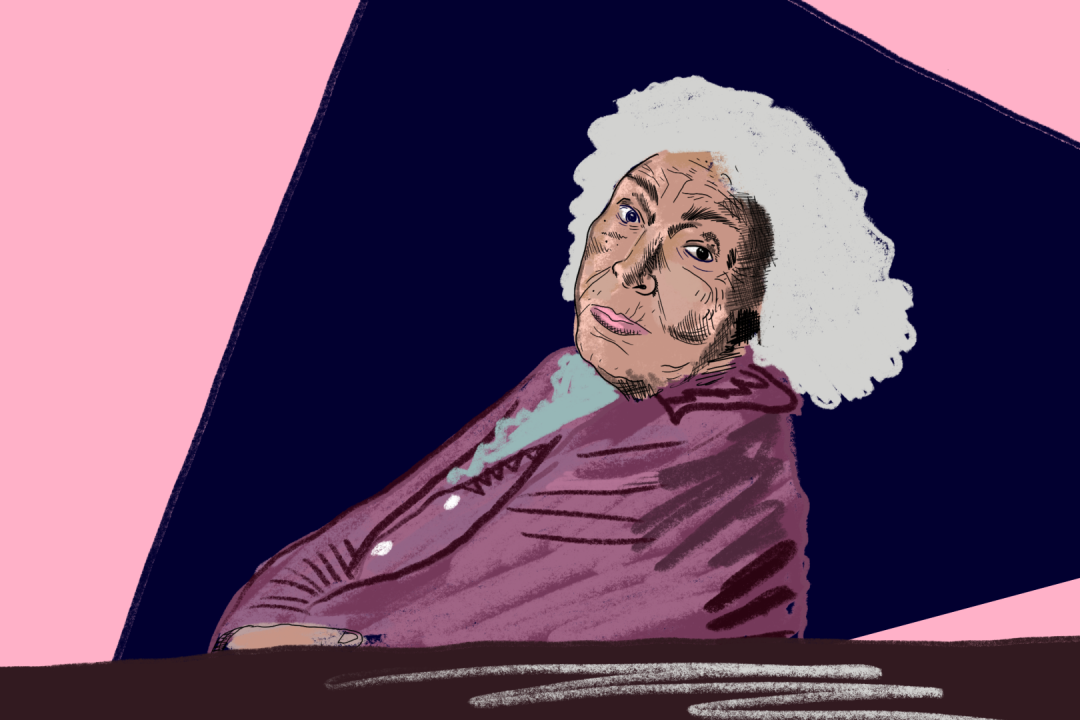Salvador Dalí: How Can a Fascist Man Define Surrealism?
Salvador Dalí, an acclaimed Spanish surrealist painter and printmaker who lived between 1904-1989, has frequently been credited for reformulating the prospects and capabilities of art, all while simultaneously catapulting surrealism into becoming the most influential artistic movement of the 20th century. Surrealism, which literally translates to “above or beyond reality”, is the portrayal and expression of the repressed insight and vision of the mind and consists of a combination of varied art techniques with the distortion of reality.
The movement’s outright rejection of rationality was influenced and inspired by Sigmund Freud’s psychoanalytic dream interpretation, the subconscious mind, along with the partial influence of the political philosophies of Karl Marx in some aspects; however, it was born out of the Dadaist art movement and indirectly inspired by cubism. Throughout the 1930s, Salvador Dali became a prominent figure as he continued creating magnificent, jarring artworks and garnered recognition for his controversial ideas. Despite continually being a renowned surrealist figure from early on in his career till now, Dali’s political and philosophical stances entirely contradict the surrealist philosophies.
Although surrealism did not strictly adhere to any one political philosophy as an artistic or cultural movement. Numerous Surrealists did however, have political leanings and engaged in political activity at the time. The Surrealist movement included a wide variety of viewpoints, despite the fact that some Surrealists had Trotskyist, communist, or anarchist ideas. It is important to note that the political attitude of Surrealism changed throughout time and that various members of the movement held distinct views. Some Surrealists remained completely uninvolved in politics, concentrating instead upon the artistic and creative components of Surrealism. Others might have adopted a variety of political perspectives or held sophisticated opinions.
Surrealism, however, at its most fundamental level revolted against the restrictive laws of modern society by destroying its foundation of logical and rational thinking and at its core, surrealism pushed against dictators and other authoritarian leaders. Early 20th-century surrealism developed as a reaction to the social, political, and cultural surroundings of the era, which included the emergence of dictatorships and brutal governments.
Surrealism had an international cultural influence and made room for harmony between a way of life that is based on reason and rationality, and one that recognizes the importance of dreams and unconscious thought processes. It inspired a means to escape from the brutal conditions and realities of life for people after World War I while providing an openness to challenge enforced standards and principles, along with encouraging a desire for freedom and expression.
Salvador Dali's combined support for fascism and identification with surrealism, as well as his affection for Adolf Hitler, provides a perplexing contradiction that raises concern regarding our perception of the connection between an artist's work and their personal convictions. Surrealism's focus on questioning the norms of society and investigating the illogical and intuitive seems fundamentally in conflict with fascist ideologies' strict and authoritarian structure.
Yet, Dali's political views highlight the nuanced relationship between art and politics as well as the ways in which a person's personal beliefs can affect or even conflict with their artistic attempts. We can learn more about the complex relationships that exist between a creative person's expression and their political beliefs by looking at Dali's participation in surrealism and his fascist inclinations.
Salvador Dali has frequently been credited for defining surrealism and his artistic style had a prominent influence on the movement. Surrealism was given a distinct aesthetic by Dali's artistic methods, such as his painstaking attention to detail and hyper-realistic representation. He explored the world of dreams and the unconscious, producing remarkable compositions that subverted conventional ideas of reality. The symbolic and irrational elements of Dali's artwork frequently encouraged spectators to engage in their own interpretations and unconscious interconnections. In his early years, Dali was an active surrealist, but over time, he began to separate himself from the movement's overall activities. Disputes with André Breton, the founder of surrealism, resulted from his growing obsession with celebrity and financial success. The movement's emphasis on group action and anti-establishment values collided with Dali's celebration of individualism and the pursuit of individual acclaim.
The discussion over Dali's political leanings centers on his alleged ties to fascism. Dali openly endorsed General Franco's nationalist forces during the Spanish Civil War in the 1930s, which led to the establishment of a fascist state in Spain. Some have come to believe Dali was favorable to fascism because of his support of Franco and his government, his fascination with authoritarian leaders, and his controversial statements.
Examining the context of history and the sociopolitical setting in which Dali lived is necessary to comprehend his political views. Following the development of fascism and totalitarian rulers in Europe, the early 20th century was characterized by tumultuous political environments. The surrealist movement, which emerged from a desire to question established norms and values, frequently drew artists looking for different ways to challenge the established status quo. Dali's interest with fascism began to take shape in this environment because he saw in its blatant authoritarianism a way to rebel against societal norms. However, this membership also raises important issues regarding artists' responsibilities and the risks associated with their political affiliations.
Furthermore, Dali has repeatedly been criticized and condemned for his distinct admiration and fixation on Hitler and Nazism. Dali had dedicated numourus paintings to Nazism and Hitler. Salvador Dali's former surrealist colleagues dubbed him "ávida dollars" (literally, "eager for dollars") for renouncing idealism in favor of fame and wealth, It may be argued that Dali's political views developed as a result of his financial difficulties, which compelled him to make controversial statements in an attempt to attract attention and earn profits. Perhaps an arguement in Dali’s defense could be made with this perspective and state that anybody facing financial strife, or any form of struggle, would do whatever they deem necessary in order to liberate themselves and their loved ones of their struggles, even at the cost of their reputation. Dali’s former colleagues truthfully suspected him of far worse. The group criticized him for his picture The Enigma of Hitler. Salvador Dali later sent a letter, in reaction to the outcry, revealing his obsessive yearning and insatiable desire for Hitler, writing "His flesh, which I imagined to be whiter than white, ravished me. There was no reason for me to stop telling one and all that to me Hitler embodied the perfect image of the great masochist who would unleash a world war solely for the pleasure of losing and burying himself beneath the rubble." He also supposedly stated that he "often dreamed of Hitler as a woman." and wrote in The Unspeakable Confessions of Salvador Dalí, “Hitler turned me on in the highest.” Additionally, Dali has a history of being cruel and abusive, even going so far as to take pleasure in the indulgence in a way that is genuinely sadistic. In contrast to prominent painters, Dali's long list of acts of brutality toward both people and animals is more in line with the early years of serial murders. He is undoubtedly misleading his audience by grossly exaggerating for shock value, similar to what many have before him. Therefore, it would be entirely fair to argue that Salvador Dali’s controversies and political leanings are not simply a result of desperation due to his financial struggles but also a product of his perverse inclinations and social attitude.
When George Orwell wrote an essay heavily critiquing Dali and his work, Orwell permitted the misleading in exchange for shock value. ‘The reality is that this is the sort of thing Dali was eager to do, therefore it barely matters which of the stories are real and which are made up’, Orwell writes. Orwell is also disgusted by Dali's art, which is fueled by misogyny, a confessed necrophilia, and a fixation with filth and decaying corpses, just as he is by the artist's personality. Orwell asserts that Dali's sexuality should not be ignored or excused, but that doing so is also entirely unacceptable. Given that he had experienced the horror of war and battled fascism in Spain. Orwell uses a scenario involving a person who is much less controversial than Dali to fully illustrate his point: "If Shakespeare returned to the earth tomorrow, and if it were found that his favorite recreation was raping little girls in railway carriages, we should not tell him to go ahead with it on the grounds that he might write another King Lear." Although some would argue that Orwell’s stance does not allow a direct separation between art and the artist, it is important to note, that the surrealist movement frequently aimed to push the limits and provide viewers with strange and unpleasant visuals. Therefore, an argument can possibly be made of Dali as an artist and an individual personifying the genre of his art, and perhaps one could argue that nothing embodies surrealism quite like a being with an indomitable, insatiable appetite for the demonstration of brute violence, cruelty and sadism.
Some critics state that Dali's interest in grotesqueness, brutality, and sexuality can be encountered in a number of his works of art. A particular feeling of sadism or an interest in the morbid has been connected to his investigation of unsettling and surreal imagery, such as melting shapes, mutilated bodies, and twisted figures. So then perhaps, one could use this to argue to not separate the art from the artist, as the artist is reflected within their art and the art is influential on its audience.
To conclude, George Orwells essay raises the position that one’s ideas and intentions are equally as significant as their actions and that their intentions and desires should not be discarded, as they are reflected throughout the work. Throughout Dali’s work, an element that is continuously observed is sadism, whether that be his sadistic approach to art or his sadistic perception of reality and subconscious. So then perhaps one could argue that at his core, Salvador Dali's controversial beliefs or actions, often associated with Nazism or fascism, may not have been driven by political ideologies but rather stemmed from a profound inclination towards sadistic tendencies. This perspective prompts the discussion about the motivations behind his behavior, suggesting that his deepest desire could have been to indulge in sadism, leading to an intricate exploration of his complex character.
The relation between Dali's art and political leanings is a subject of debate even amongst scholars. Dali's work was capable of being recognized by an extensive audience due to his popularity and artistic reputation. His work received a wide range of responses from spectators, and various people would have reacted and interpreted it in different ways. Others might have been impacted by his political convictions and found it challenging to distinguish the artist from his work, while some would have admired his technical skill and inventive compositions.
While some say that his support of fascist dictators like Hitler and Franco had an impact on some aspects of his work, others assert that his objectives were more nuanced and weren't always represented in his creative output.




